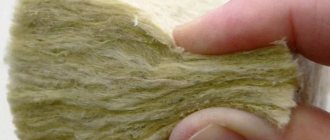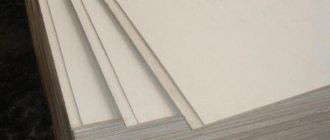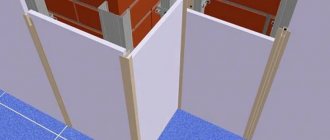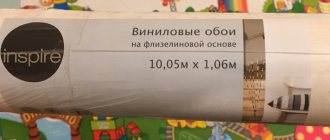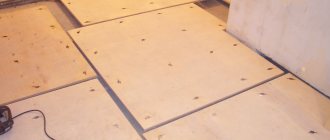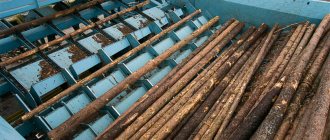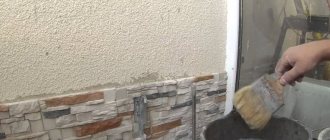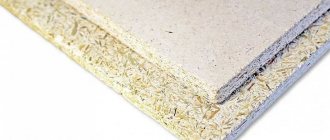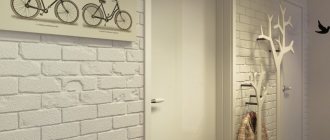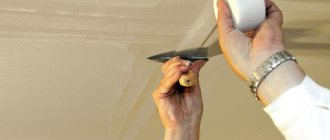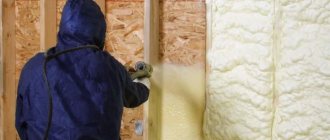The problem of thermal insulation of housing is one of the main ones both during the construction or reconstruction of a building, and already during its operation. A thrifty owner knows that effective insulation goes far beyond just ensuring a comfortable microclimate in the premises. Operating costs are significantly reduced, and the house itself becomes much more durable.
Mineral wool or basalt wool? Let's figure out what's best for home insulation.
In the modern abundance of thermal insulation materials, it is easy for an inexperienced person to get confused. Nevertheless, almost anyone you ask knows about the presence of fibrous insulation, called “cotton wool” for a certain external similarity. But there are several similar materials - they differ in their basis, and, possibly, other basic characteristics. That’s why you often find queries in online searches about how mineral wool and basalt wool differ from each other? Let's figure out what is best for insulating a residential building.
Mineral wool - what is it and where is it used?
Mineral wool became available to the average consumer more than 10-15 years ago. Since then, manufacturers have only improved its properties - by reducing the harmful effects on the environment and increasing thermal insulation characteristics. However, its main basis remains unchanged - mineral fibers in an air-structural spatial arrangement.
The material has a shapeless or granular structure with lumps, yellow, brown or green in color with an admixture of various shades. Mineral wool is produced by melting sand, glass, rocks and slag and then centrifuging the molten mass using the blow molding method (similar to the production of cotton candy).
As a result, a cotton mass is formed with three directions of fibers - horizontal, vertical and chaotic. To give the product the required strength, the fibers are impregnated with binding components - synthetic resins, bitumen and other substances. Next, the mass is formed into a form convenient for use - slabs or mats.
Structure of mineral wool Source gipsohouse.ru
Mineral wool is used not only for insulating the walls of a private house from the outside or inside, but also in a number of other cases:
- Thermal insulation of communication networks - water supply, sewerage, gas lines.
- Soundproofing of interior partitions.
- Production of sandwich panels.
- Protection against heat loss through horizontal ceilings and roofs.
- Equipment casing.
- Manufacturing of a filtration system.
- Creation of a wet and ventilated facade.
Note! Mineral wool is often used to line chimneys in attics and attic rooms for better heating and to prevent condensation accumulation. However, when heated to 300-4000C, the material undergoes destructuring with loss of properties. In the future, it will simply crumble. To avoid this, you need to choose a heat-resistant option - basalt wool.
TechnoNIKOL is a reliable Russian brand
This is an exclusively Russian brand that has 53 factories in 7 countries. Among them are Germany and Great Britain, Italy and Lithuania. Official representative offices are located in 18 countries. The company's training centers are also located there. TechnoNIKOL has its own Research Centers for the development of new technologies for heat and sound insulation. The products of this concern are very popular due to competitive prices and are sold in 95 countries.
TechnoNIKOL general building thermal insulation based on stone wool
An inexpensive way to perform thermal insulation on any construction site is with materials based on stone wool with a universal purpose. At TechnoNIKOL such products are represented by the BAZALIT series. All brands can be mounted horizontally or vertically.
- BAZALIT L-30 - has a density of 25-35 kg/m3 and a thermal conductivity of 0.032 W/(m*K) at an outside temperature of 10 degrees. Well suited for a base layer followed by cover.
- BASALIT L-50 - denser slabs (36-50 kg/m3), designed for installation in any spatial position. Particularly good for the bottom layer when insulating floors and interfloor ceilings.
- BASALIT L-75 is the most dense material based on stone wool with an indicator of 51-75 kg/m3. Vapor permeability of 0.5 mg/(m.h.Pa) allows its use in the middle layer on walls with light masonry.
TechnoNIKOL stone wool for insulation of all types of roofs
For all types of roofing, the TechnoNIKOL company has developed a line of TECHNORUF insulation materials. The TECHNORUF N EXTRA brand is produced in the form of a basalt slab with a density of 90-110 kg/m3 and can withstand pressure up to 3000 kg per 1 m2. It is optimal for arranging a sloping roof. TECHNORUF N PROF is next in class and has a density of 110-130 kg/m3. With a deformation of 10%, it is capable of carrying a load of up to 4000 kg per square meter, which is also not bad for insulating a roof of complex shape.
TECHNORUF V PROF is designed for all types of flat roofs. It has a pronounced hydrophobic effect. It can act as the top durable layer in three-layer structures. Its density is 175-205 kg/m3, and its strength can withstand up to 8000 kg of pressure per m2. To quickly create a slope on a flat roof for precipitation, use TECHNOROOF WEDGE 4.2%, which automatically forms a slope contour. At the same time, cotton wool itself effectively combats cold retention and has a thermal conductivity index of 0.038 W/(m*K).
TechnoNIKOL TECHNORUF N EXTRA.
TechnoNIKOL stone wool for insulation of ventilated facades
For ventilated facades, the manufacturer offers a whole line of basalt wool from the TECHNOVENT series. TECHNOVENT EXTRA brand is quite suitable as a base layer or in combination with another insulator. Its breathability is 35 m*s*Pa.
There is another type of this material - this is TECHNOVENT N PROF, the air permeability of which is 80 m*s*Pa. The insulation is intended for use in industrial and civil construction during new construction and reconstruction of buildings and structures for various purposes as an inner layer with two-layer thermal insulation in curtain wall systems with an air gap.
TechnoNIKOL stone wool for insulating a wet facade
TECHNOFAS EXTRA insulation, designed to retain a thick layer of plaster, is well suited for wet facades. The density of the slab is 80-100 kg/m3, and the thickness is from 50 to 150 mm.
When a thin layer of plaster is planned, you can save money and choose TECHNOFAS EFFECT, which, with a smaller cross-section, has an increased density of 125-137 kg/m3, which will provide the required strength. TECHNOFAS DECOR is produced for insulating facades on balconies and loggias, therefore it has an increased tensile strength of 25 kPa.
TechnoNIKOL TECHNOFAS EXTRA.
Varieties
Thermal insulation wool is classified according to the raw materials used in production into the following 3 types:
- Stone.
- Slag.
- Glass.
Let's look at their features in more detail.
The principle of insulating a wall from the outside with stone wool Source fasadec.ru
Stone
Stone or basalt wool is made from rocks of volcanic origin - mainly granite, porphyrite and basalt. Due to the fine-grained nature of the raw materials, the fibers during production are very thin (about 1-3 microns) and long - up to 50 mm. Such structural features determine a number of the following positive properties of the material:
- Resistance to aggressive environments.
- Preservation of structure when heated to 1000°C.
- High levels of elasticity, strength, flexibility, porosity.
- Attenuation of sound air and shock sound vibrations.
- Applicability for interior decoration.
- Possibility of installation under plaster.
- 50 years of service.
- Hygroscopicity – no more than 1%.
Stone mineral wool for insulating house walls is not without its drawbacks. First of all, they are associated with the highest price among analogues and reduced heat resistance (for polymer-based varieties).
Insulating the attic from the inside with stone wool Source recn.ru
Slag
The production of the slag type of heat-insulating material is based on waste from metallurgical production. In this case, the average parameters of the fibers are as follows: length 15-16 mm, diameter - 5-12 µm. Since the material cannot withstand a large number of temperature change cycles and contains harmful acidic components, it is not used for finishing residential premises, but mainly for outbuildings.
Against the background of the general advantages characteristic of this type of thermal material, slag wool has a fair number of disadvantages:
- The minimum heat resistance is only 300°C.
- High hygroscopicity.
- Manifestation of causticity during styling.
- Presence of harmful components in the composition.
- Reaction with metal surfaces.
However, slag wool is an inexpensive insulation option with good durability, sound insulation and the ability to be easily installed in hard-to-reach places.
Mineral wool is suitable for insulating the external walls of any building Source stroy-podskazka.ru
See also: https://m-strana.ru/brands/uteplenie-domov/
Glass
Glass wool is made primarily from glass mass with the addition of limestone, soda and dolomite. The length of the fibers of the material can reach 5 cm. Among its main advantages are:
- Heat resistance up to 450°C.
- High elasticity, vibration resistance and impact noise resistance.
- Chemical resistance.
- Versatility in use.
However, insulation with glass mineral wool has a number of limitations. It has a high water absorption coefficient, insufficient heat resistance and is caustic during installation.
On a note! Mineral wool in rolls is always characterized by a minimum density. This is due to the fact that the material itself is very fragile, and with a high density value it would simply break when trying to roll it.
We deal with each type personally!
Slag wool
Metallurgical technologies require huge deposits of blast furnace slag - practically empty melted rock. Terricons of such slag are almost the “calling card” of large metallurgical plants. The problem of recycling this waste is largely solved by the production of various building materials, including fiber insulation.
To do this, the slag is melted in special furnaces. And then thin fibers are drawn from the melt, which are subsequently formed into blocks or mats using binders. The output is the same insulation, which is called slag wool.
To be honest, I’m not completely sure that the illustration shows exactly slag wool. Information about her, I must say, is very vague...
They say that it once completely prevailed among fiber insulation materials, as it was used extremely widely. But now her popularity is approaching zero, and it’s hard to even imagine that someone would let her into their apartment building.
What’s interesting is that they write a lot of negative things about this material (apparently, rightly so), but even “admiring” such cotton wool is a whole problem. The picture above looks like it, but I came across the same one with the caption that it is basalt insulation.
Anyway. There is no point in wasting too much time on slag wool - for the simple reason that it is of little use for home insulation.
Let's look at the advantages and disadvantages:
pros
- The only advantage of slag wool is its low cost. By the way, there will be another small remark on this topic below.
Minuses
- Slag wool, due to the high fragility of the fibers, quickly cakes, loses volume, and therefore loses insulating qualities.
- Slag wool is very hygroscopic and requires reliable protection from moisture. Once wet, it simply ceases to be insulation - just like a wet rag.
- The slag from which insulation is produced usually has very high acidity. Contact of slag wool with metal parts of a structure can dramatically intensify corrosion processes. And in general, an unclear and unstable chemical composition is not what is needed for a residential building.
- Slag wool contains the maximum amount of formaldehyde group binders. And probably no one is fighting for its environmental friendliness...
- By the way, blast furnace slags are not always good in terms of background radiation.
- In terms of working with it, slag wool is inconvenient - the fibers are brittle and thorny. The use of reliable personal protective equipment is mandatory. Otherwise, skin irritation, or even worse, eyes and mucous membranes, will be guaranteed!
We can remember more, but what has already been said is probably quite enough. Let’s put a “fat cross” on this insulation!
And - the promised remark. It was supposed to complete the subsection about slag wool with a Yandex Market widget in order to prove its only advantage - the most affordable cost. But, sorry, it didn’t work out - there are no offers on Ya-Market!
Expert opinion: Afanasyev E.V.
Chief editor of the Stroyday.ru project. Engineer.
I specifically called all the leading construction stores in my city - there is no such cotton wool anywhere. Glass wool - please, basalt - there are also several brands to choose from. And slag materials were never even imported. Another argument about the “popularity” of this insulation among private consumers.
The only place where offers were found on the Internet was Ali Express, wholesale deliveries. And even there one cannot rule out “difficulty of translation”, since in many ways the proposed insulation is more like basalt.
So, we are left without an exact guideline on the issue of cost.
Glass wool
The raw material for the production of this insulation can be either natural material - quartz sand, or glass waste. Everything is melted down with the addition of special additives that give the thin fibers drawn from the melt in centrifuges a certain elasticity and reduce fragility. Then, from the resulting fibrous mass, webs with a certain fiber orientation are first formed. This is followed by the processes of pressing and cutting into mats and slabs of certain sizes, and other necessary technological operations.
As a result, packaged insulation materials in various release forms are sent to the consumer. The most characteristic color of glass wool is a variety of shades of yellow. However, there are exceptions - even snow-white.
High-quality modern glass wool for universal use “ISOVER Warm Home”.
As already mentioned, it is behind glass wool that there is a trail of rumors associated with its increased allergenicity, causticity, and ability to cause persistent serious irritation of the skin and mucous membranes. Surely this is not out of nowhere, and many of us remember the results of our childhood “experiments” at construction sites.
It is possible that such glass wool is still in use. But modern insulation materials with increased elasticity and elasticity of fibers, using absolutely safe acrylic resins as a binder, are much more popular today.
One of the examples of modern brands of glass wool is “PureOne” from
The use of optimally selected raw materials that have undergone a special cleaning cycle, and the use of advanced production technologies allow many companies to produce effective insulation materials, which are associated with the old familiar glass wool more by name than by performance qualities.
Nevertheless, let's go over the advantages and disadvantages of the material.
pros
- Glass wool traditionally has high thermal insulation efficiency.
- Glass itself, unlike slag, is a chemically inert product and will not emit any harmful fumes into the indoor atmosphere. Binders are a different matter; here you need to be on guard (this has already been discussed).
- There is a lot of talk about the fact that rodents do not like glass wool. Perhaps this is true to some extent. Half jokingly, if mice have a choice between living in glass wool or basalt wool, they will most likely choose the latter. But, unfortunately, even in glass wool insulation they make excellent passages and make nests. Moreover, in a timely manner, which in its physical qualities is very close to stone.
- Glass wool is light and elastic, and if the precautions are followed, it is quite convenient to work with.
- High vapor permeability will prevent stagnation from forming - if the insulation is positioned correctly, it will be effectively ventilated.
- The cost of glass wool is considered more affordable than that of its main competitor - basalt insulation. However, this difference is becoming more and more blurred in our time.
Minuses
- The fragility of the fibers inherent in many brands of glass wool, which has already been mentioned more than once.
- Due to the fact that glass itself is not considered absolutely solid, but an amorphous material, that is, it gradually “flows,” glass wool also tends to gradually lose volume and cake. But, we repeat, by introducing special mineral additives, manufacturers have learned to combat both the “fluidity” and the fragility of fibers.
- Rumor has it that glass wool is not doing well with hygroscopicity. But this also now largely depends on the quality of the product - some brands have achieved almost hydrophobicity - they do not absorb moisture at all. Well, when installing an insulating structure, hydro- and vapor barriers are definitely mandatory, and regardless of which type of mineral wool is used.
The most well-known manufacturers of thermal insulation based on glass fiber remain the companies URSA and ISOVER . The reader can follow the links to special articles on our portal devoted specifically to these insulating materials - there he will certainly find a lot of interesting information.
Mineral wool URSA
Video: Impressions from working with URSA glass wool
Basalt wool
There seems to be some kind of contradiction in the name itself - “stone wool”! Meanwhile - all this must be taken almost literally - stones are the raw materials for the manufacture of such insulation. Not all, of course, but some rocks belonging to the gabbro-basalt group. However, these rocks are extremely common throughout the planet, so there is no shortage of raw materials, at least today.
It seems incredible, but from such rough stones the output is a fibrous, air-filled structure, reminiscent of elastic felt.
The finest fibers drawn from the melt of such rocks differ from glass or slag in higher flexibility and elasticity, that is, they do not break under compressive load. And because of this, the insulation acquires a structure that is very similar in appearance and tactility to natural felt. But despite all this, it remains a mineral material, not subject to getting wet, rotting, or other biological damage.
The elasticity of the fibers is also confirmed by the fact that some brands of mineral wool, after removing the packaging, are capable of expanding, increasing in volume several times! A huge plus in terms of organizing the storage and transportation of the material, without losing its insulating qualities!
In principle, all the advantages of mineral stone wool, which distinguish it from its “competitors,” flow from the increased strength and elasticity of the fibers.
Interestingly, basalt wool can be produced in a very wide range of densities. And many “heavy” insulating boards can fully cope with the loads under a floor screed or in a flat roof structure. And what’s really remarkable is that this doesn’t even particularly affect the insulation capabilities of the material.
Insulation of a flat roof with blocks of high-density basalt mineral wool.
So, the yet unnamed advantages and disadvantages of stone wool.
pros
- This type of cotton wool is the most comfortable to work with (so to speak). And during further operation, if really high-quality material was used, you don’t have to worry about the appearance of fine dust from breaking fibers.
- Judging by the characteristics, it still has the lowest thermal conductivity coefficient.
- We can safely say that such insulation is the most durable among fiber insulation - manufacturers guarantee several decades of “flawless service”. Compared to others, it is the most “stress-resistant”, that is, capable of withstanding various negative influences, for example, vibration, without losing its forms and qualities
- The hygroscopicity of basalt wool is reduced to such a minimum that we can rather talk about the hydrophobicity of the material. And this quality is complemented by high vapor permeability, which guarantees ventilation of the insulation.
- The elasticity of the fibers is an excellent quality for effective noise absorption - sound vibrations simply “drown” in this structure.
Minuses
- Fibers are fibers, but some brands of stone wool are still far from environmentally friendly. Simply due to the presence of a harmless phenol-formaldehyde binder. That is, if the owner is really fighting for a healthy atmosphere in his home, he will have to look for brands of insulation with harmless binders. There are many of these, but they are, of course, more expensive.
- Stone wool does not prick, it is comfortable to work with... Believe me, mice also appreciate this very much, and willingly make their nests there! So you will have to come up with some kind of “mechanical barriers” to prevent rodents from penetrating the insulation - metal mesh, expanded clay backfill, etc.
- The cost of basalt mineral wool is the most sensitive. However, some brands of modern glass wool, as already mentioned, are located very close in the “price scale”.
There are a lot of manufacturers of high-quality basalt wool. On the pages of our portal there are detailed reviews on insulating materials from the companies “ROCKWOOL” , “BASWOOL” , “KNAUF” .
Mineral wool ROOCKWOOL
Video: Advantages of ROOCKWOOL mineral basalt wool
Dimensions, shape
Modern manufacturers package tepid wool in two main forms:
- Rolls or mats. The length of the product is 7-10 m, width 120 cm, thickness – 50 mm. The density of the material is quite low. This is due to the purpose of the rolls - for finishing floors, roofs, partitions and other non-load-bearing structures.
Mineral wool slabs and rolls for thermal insulation of walls Source o-cemente.info
- Plates. Standard dimensions are 120 x 60 cm, width 5-10 cm. Density is medium or high. Designed for installation in hard-to-reach places and structural elements with loads.
Good to know! The main advantage of mineral wool as insulation for wooden walls is the unhindered transmission of water vapor. This allows you to maintain the natural microclimate in the house. However, before laying the material, the wood surface must be treated with antiseptic compounds to avoid the formation of mold and fungi due to possible accumulation of dampness.
Is there any harm to health during installation?
Many inexperienced builders often confuse stone wool and glass wool, although in fact these are two different materials belonging to the same class of mineral wool. Because of this, a common myth has arisen that stone wool, like glass wool, is also harmful to health, damaging the eyes and lungs. But this is just a delusion.
The point here is its special structure. The insulation is stone fiber bound with formaldehyde resins; they do not collapse and do not spread harmful substances. Therefore, we confidently declare that this building material is absolutely safe.
Advantages and disadvantages
General benefits of using mineral wool:
- Good thermal insulation properties.
- Noise absorption.
- Environmental Safety.
- Fire resistance.
- Moisture resistance.
- Vapor permeability.
- Durability.
- Resistance to biological factors.
- Processability.
- Easy installation.
- Strength.
Negative factors of using the material include:
- The need to use protective equipment during installation.
- High cost compared to alternative synthetic insulation.
To insulate a large area, you will need to invest a lot of money Source imageban.ru
- Deformation of the structure under the influence of load, wind, vibration, shrinkage, and wetting.
- Insufficient heat resistance.
Important! With all the obvious pros and cons, mineral wool has long established itself as a reliable material for insulating the walls of a house. However, in order for its service life to correspond to that declared by the manufacturer and for the structure not to suffer from the effects of moisture accumulation under the cladding, it is necessary to strictly follow the installation technology.
In what cases is it better to use mineral wool?
It is difficult to answer the question of what is better to insulate a house, mineral wool or polystyrene foam. After all, various factors are taken into account. For example, polystyrene foam is not suitable for wooden houses, since it is not vapor permeable. But, protection from moisture is better. On the other hand, it burns, is not environmentally friendly and is spoiled by rodents. Although, mineral wool weighs more and is more expensive. Such nuances are taken into account and the best option is selected.
Insulation of the walls of a wooden house from the inside is done with cotton wool, since polystyrene foam releases harmful substances when heated. In conditions of elevated temperatures, cotton wool is also better suited (sauna, bathhouse, wall near the fireplace or near the stove). The same applies to insulation in a house where an allergy sufferer lives. It is also better to insulate the roof and ceilings with cotton wool.
Insulation technology
When finishing the walls of a house with mineral wool, first of all it is necessary to take into account the following important aspects:
- Material will be laid on the inside or outside of the walls of the house.
- Calculation of dew point.
- The thickness of the required layer and its density.
Let's look at these features in more detail.
External
Insulation of walls using wet technology is carried out according to the following algorithm:
- The outer surface of the wall is cleaned, if necessary, primed and treated with an antiseptic.
- The base plate is installed.
- Next, the mineral slabs are laid, glued and screwed onto dowels onto the prepared surface.
External insulation diagram Source kronotech.ru
- A reinforcing mesh is mounted on top of the material layer.
- After this, the wall is primed, plastered and painted.
If the walls are made of wood or foam concrete, ventilated facade technology is used. It differs from the one described above in that the tepid material is placed in a pre-installed lathing frame. At the same time, its depth is such that there is a gap of several centimeters between the finishing material mounted on it in the final stage and the insulation. In addition, the surface of the cotton wool must be lined with a wind-moisture-proof film.
Internal
Sometimes it becomes necessary to insulate the walls of a house with mineral wool not only from the outside, but also from the inside. In this case, external insulation may be absent altogether. Then the installation technology is performed in a similar way - except that there is no need to leave a gap. In addition, it is extremely important to perform high-quality steam and moisture protection. It is performed in several options:
- If the wall is made of breathable material (for example, wood), steam should leave the room, but external moisture should not enter.
Thermal insulation process
Insulating walls with mineral wool is a job that you can do yourself, even without experience in construction.
The design of an ideal warm wall is insulation, fixed on a load-bearing wall and covered with facing brickwork.
It is better to insulate a building during its construction. To do this you need to do the following:
- cover the facade along the entire perimeter with mineral wool slabs of the required thickness, fix them with fastening anchors; for example, for the Central region of Russia, slabs with a thickness of 140-150 mm are sufficient;
- form brickwork on top of the insulation layer;
- rub the seams with a solution of cement or plaster.
If the house has already been built and you need to insulate it, the technology for this process will be slightly different. First prepare the surface. To do this you need:
- free the facade from unnecessary objects, the surface should become clean and smooth;
- do not leave metal objects, they will begin to rust;
- remove old coating (plaster, paint), dust, dirt.
A clean base and installation done correctly are the key to high-quality insulation.
Video description
Video instructions for external installation of mineral wool under plaster:
- If the wall does not allow air to pass through (for example, made of brick), steam should not pass either into the wall or from the wall into the room.
Otherwise, there is a high probability of moisture accumulation in the wall material and the thermal insulation layer. In this case, the development of all the accompanying negative processes is inevitable - freezing of the walls, the formation of fungi and mold.
Dew point
The most important factor in the proper arrangement of a thermal insulation layer is taking into account the dew point. If its position is inside the wall, this means that moisture will begin to accumulate inside it and destroy the material. Thermal insulation shifts its location in two ways:
- Outside – when laid externally they are a little warm.
- Inside – with internal insulation.
Price list
Insulation of ventilation façade with cladding
| Name | Without insulation | 50mm | 100mm |
| — porcelain stoneware, rub/m2 | 3045 | 3330 | 3440 |
| — fiber cement panels, rub/m2 | 3175 | 3460 | 3570 |
| — metal cassettes, rub/m2 | 3415 | 3700 | 3810 |
| — Clinker tiles, rub/m2 | 5245 | 5530 | 5640 |
| — Aluminum cassettes, rub/m2 | 6860 | 7145 | 7255 |
| — Planken, rub/m2 | 4815 | 5100 | 5210 |
| — Composite cassettes, rub/m2 | 3520 | 3805 | 3915 |
| — Metal siding, rub/m2 | 2715 | 3000 | 3110 |
| — Profiled sheet, rub/m2 | 2215 | 2500 | 2610 |
| — Terracotta panels, rub/m2 | 7815 | 8100 | 8210 |
| — HPL panels, rub/m2 | 6860 | 7145 | 7255 |
| — Natural stone, rub/m2 | 6090 | 6375 | 6485 |
| Name / thickness of thermal insulation | 60mm | 80mm | 100mm |
| Turnkey installation of thermal panels lined with artificial stone, rub/m2 | 3300 | 3450 | 3550 |
Briefly about the main thing
Mineral wool is an air-structured fibrous material produced by air centrifuging molten rock, slag and glass. It is widely used for heat and sound insulation of walls, partitions, ceilings, communications, equipment and structures.
Based on the type of mineral wool raw material, there are 3 varieties:
- Stone.
- Slag.
- Glass.
Each of them has its own pros, cons and purpose. The material is produced in the form of slabs and mat-rolls. The main advantages of mineral wool are resistance to fire, dampness and biological factors, and durability. Disadvantages - high cost and possible destruction of the structure over time. When laying, it is necessary to take into account which side the installation is being carried out on - from the inside or outside, where the dew point will be located and what the thickness of the heat-insulating layer should be.
Ratings 0
General Tips
A few rules and notes for quality work.
How to choose and apply glue to mineral wool
Without the correct selection and use of glue, the insulation may sag and cease to act effectively. Stone wool is a rather unusual material, and not every adhesive can provide high-quality adhesion to the wall.
Polymer-cement compositions will provide the highest adhesion. They are sold as a dry mixture similar to cement. There are several well-known brands: “EK THERMEX”, “ERESIT CT190”, “ERESIT CT180”.
Following the instructions on the package, dilute the mixture with water and mix well (repeat after 5 minutes). The solution will retain its adhesive properties for 2 hours.
Apply the solution evenly onto a flat surface of the wall so that you get 7-8 glue circles. We also apply glue to the back side of the cotton wool (closer to the edges); the surface should be covered with the composition more than half. It is also better to coat the joints. The glue hardens for some time, so it is possible to lay the slab correctly. Attaching stone wool to a wall is simple.
Sometimes, for greater reliability, additional fastening may be required. Anchor bolts or slats secured to the sheathing can help here.
Vapor barrier of walls
When carrying out work on wall insulation, you need to do so as to minimize the penetration of moisture from the interior of a residential building under the insulation.
To do this, you need to provide a layer of vapor barrier; it is laid directly on the wall. To do this, you can use an air-permeable diffuse membrane.
The vapor barrier material is attached using a construction stapler; individual strips must be secured with staples. To preserve the insulating properties of the material, it is best to overlap the fabric by 10 -12 cm.
The seams can be additionally insulated with adhesive tape (stationery tape is suitable for this purpose).
Carrying out waterproofing work
Since mineral wool is a thermal insulation material with high water permeability properties, the façade of the house must be provided with good waterproofing.
In order to ensure the process of removing moisture from mineral wool boards, which is formed as a result of temperature differences indoors and outdoors, it is necessary to install a waterproofing film or diffusion membrane.
To ensure water movement only in the outer direction, it is necessary to fasten the waterproofing with the wide side of the pores to the mineral wool, and the narrow side to the sheathing. Self-tapping screws should be used as fastening elements. The waterproofing is laid overlapping, from top to bottom, the seams are taped with mounting tape.
Waterproofing under siding
